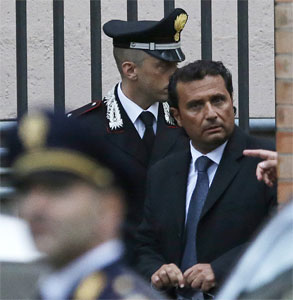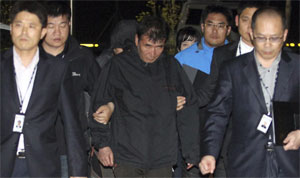Recent lengthy prison sentences given out to captains found guilty for the deaths in major casualties raise the question of whether the master should be singled out for such draconian punishment, given the complexity of these disasters.
Capt. Lee Joon-seok, of the South Korean ferry Sewol, was found guilty last November of gross negligence and dereliction of duty for abandoning ship. He was sentenced to 36 years in prison. Prosecutors charged him with homicide and asked for the death penalty, but he was acquitted of that charge. The Sewol sinking occurred in April of last year, killing 304 people.
Capt. Francesco Schettino, of the Italian cruise ship Costa Concordia, was found guilty in February of multiple counts of manslaughter. He was sentenced to 16 years in prison for the vessel’s sinking, which killed 32. He was also found guilty of causing a wreck and abandoning ship after it struck rocks off Giglio Island in 2012.
Capt. Lai Sai-ming, of the Hong Kong ferry Sea Smooth, was sentenced in February to eight years in prison after an October 2012 casualty that killed 39. He was found guilty of multiple counts of manslaughter and one count of endangering the lives of others at sea. Sea Smooth and a pleasure boat collided off Lamma Island.
“It’s bloodlust,” said Allan Graveson, senior national secretary of Nautilus International, a union that represents mariners in the United Kingdom, Switzerland and the Netherlands, about Schettino’s sentence. “(In all three cases) I would say the sentences are too harsh.”
Schettino took Costa Concordia on a “fly-by” of Giglio Island, using the wrong scale chart while sailing too fast and too close to a poorly lit coastline, according to the Italian report. After the vessel struck the rocks, Schettino, bridge officers and company officials failed to tell authorities about the casualty and minimized its severity. Schettino waited almost an hour to sound the general alarm.
On Sewol, passengers were told to stay in their rooms and crewmembers were not ordered to muster stations. The ship was illegally carrying at least three times its licensed cargo and about one-quarter of its water ballast. Crewmembers were not trained in evacuation and safety procedures.
The officers and crew on these ships were punished too, but not as severely as the masters. Only Sewol’s chief engineer received as severe a punishment as the captain, sentenced to 30 years for willful negligence for failing to save two injured crew.
The criminalization of some aspects of maritime law has been an increasing concern for mariners. When it comes to the legal consequences of a mariner’s behavior, in non-maritime courtrooms, the key legal question is the intent of the masters and whether they engaged in reckless and wanton conduct, said Craig H. Allen, a professor of marine and environmental law at the University of Washington School of Law.
 |
|
Capt. Francesco Schettino of Costa Concordia enters a hearing at the start of his manslaughter trial. |
|
Associated Press photos |
“Where the conduct rises to the level of gross negligence or reckless endangerment of human life, I don’t see the maritime law being all that different from its terrestrial equivalents,” Allen said.
Daniel S. Parrott, a professor of marine transportation at Maine Maritime Academy, said prison time depends on the purpose of the sentence. “If the prison sentences meted out are intended to address the underlying causes of the incidents, then the captains should not be saddled with the entire burden of fault.” But that is not always the case.
“If it is a witch hunt and they need someone to string up, it is possible, with the pressure of publicity, to have excessive sentences that do not fit the degree of negligence,” Parrott said.
Graveson said going after the captain does not address the larger issues around a casualty, including safety issues with the design and construction of ships, failure of regulators to do their job and unsafe company practices. “The result is you don’t get to what is known as the root cause, or combination of causes, that brought about the incident.”
This was the case in both the Sewol and Costa Concordia incidents, said Parrott. “It is clear to me that the employers were complicit, either through commission or omission, in creating or allowing unsafe practices. To a lesser and varying degree, there is reason to believe that the regulatory agencies were not up to their jobs either,” Parrott said.
One example is the practice of the “fly-by,” which Schettino was accused of doing. “If cruise ship fly-bys were indeed routine, than that company has some explaining to do, not just Schettino,” Parrott said. “Fly-bys,” in which a cruise ship sails extremely close to a tourist spot, were a tradition in the Italian cruise industry.
However, Schettino’s abandonment of his command was inexplicable. “How he could not be fully aware that his place was on the ship is beyond me. For all else that was done wrong, he could have at least stayed aboard,” Parrott said.
Graveson said consequences in major casualties should be “wider-spread.” The head of the company that operated Sewol was sentenced to 10 years in prison for accidental homicide and embezzlement. The company that owned Costa Concordia paid a $1.3 million fine.

